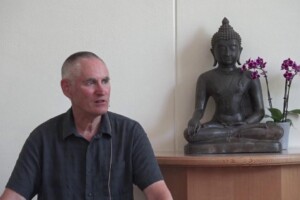What is Mindfulness?
Mindfulness refers to the practice of being present and fully engaged in the current moment. It involves paying attention to your thoughts, feelings, bodily sensations, and surroundings without judgment or distraction. By cultivating mindful awareness, you can learn to manage stress, improve focus, enhance self-awareness, and increase overall wellbeing.
The Power of Mindful Listening
Listening is a fundamental aspect of communication that often gets overlooked. When we listen mindfully, we are able to truly understand what someone else is saying and respond with empathy and compassion. Mindful listening requires active engagement, attentiveness, and non-judgmental acceptance of another person’s perspective. This type of listening helps build stronger relationships, foster trust, and promote positive communication.
Developing Awareness through Mindful Practice
Practicing mindfulness on a regular basis can help develop greater awareness of yourself and your environment. Through meditation, yoga, breath work, and other mindful practices, you can train your brain to be more focused, calm, and resilient. With consistent practice, you may notice an increased ability to stay centered during times of stress or anxiety, as well as improved emotional regulation and mental clarity.
Benefits of Mindfulness in Everyday Life
There are many benefits to incorporating mindfulness into your daily routine. Some common effects include reduced stress levels, improved sleep quality, enhanced creativity and problem-solving skills, better decision making abilities, and increased emotional intelligence. Additionally, practicing mindfulness has been linked to lower rates of depression, anxiety, and chronic pain, as well as improved immune function and cardiovascular health.
How to Start a Mindfulness Practice
Starting a mindfulness practice can seem daunting at first, but it doesn’t have to be complicated. Here are some simple steps to get started:
1. Set aside time each day for mindfulness practice (even if it’s just a few minutes).
2. Find a quiet space where you won’t be interrupted.
3. Sit comfortably with your back straight and your hands resting in your lap.
4. Close your eyes or gaze softly downward.
5. Focus on your breath and observe your natural rhythm without trying to change it.
6. If your mind starts to wander, gently bring your attention back to your breath.
Conclusion: Embracing the Present Moment
In conclusion, mindfulness is a powerful tool for improving physical and mental wellbeing. By developing greater awareness through mindful practices, we can learn to manage stress, enhance self-awareness, and embrace the present moment. Whether you’re new to mindfulness or looking to deepen your practice, there are countless resources available to support your journey towards greater inner peace and balance.





